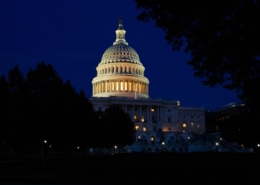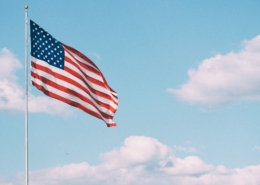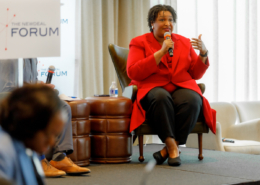The Dobbs Disaster
By Debbie Cox Bultan
CLICK TO READ THE FULL ARTICLE
Jaci Statton is an Oklahoma woman who faced life-threatening pregnancy complications. Despite her serious medical condition, she was turned away from a local hospital and told by officials to wait in the parking lot, bleeding out, until she was deemed “sick enough” under state law to receive treatment.
Sadly, Jaci’s traumatic experience is not an isolated incident. It’s one of all too many tragic stories of women being denied vital health care that comes as a direct result of the Dobbs decision.
As we mark the second anniversary of the Trump-appointed Supreme Court overturning Roe v Wade and handing control of abortion policy to states, it is abundantly clear: abortion bans are nothing short of a disaster – and one with deadly consequences for thousands of women.
Stories like Jaci’s illuminate the cruelty and danger of state bans for pregnant women, and because of that alone, state leaders who support these bans should be held accountable at the ballot box in November. However, the ripple effects – the economic, educational, and health harms – that result from abortion bans are less discussed.
Restrictions on women’s reproductive health care (including abortion care) cost state and local economies more than $170 billion annually through reduced labor force participation and earnings among women. That’s according to research from the Institute for Women’s Policy Research.
Additionally, young people are actively avoiding states with abortion bans when deciding where to go to college or start their careers. Florida’s abortion ban “is a huge problem for businesses looking to recruit young talent,” Rep. Fentrice Driskell, Florida’s Democratic House Leader, recently told me. “I’m concerned this will have long-lasting adverse implications for the state’s economy.”
Data backs up her claims. According to IWPR, Florida loses out on more than $11 billion per year because of abortion-related restrictions.
Medical professionals are also steering clear of states with bans. Research from the Kaiser Family Foundation found that “graduating medical students were less likely to apply this year for residency training in states that ban or restrict abortion,” adding that all specialties, not just medical students who treat pregnant patients, are avoiding states with bans.
“Young doctors leaving medical school are choosing to start practices in other states because of the potential legal ramifications they face in places like Wyoming,” Teton County Commissioner Natalia Macker told me recently. She’s worried because the impact of abortion bans adds more stress to an already fragile rural healthcare system like the one in her state.
Abortion bans are also driving away maternity specialists, which has far-reaching effects on families.
Idaho, which has a total abortion ban, has lost more than half its OB-GYNs as well as more than half its high-risk maternity specialists. As Idaho House Minority Leader Ilana Rubel recently pointed out: “Women are having to be airlifted to neighboring states” when they have medical complications. One woman who took such a flight developed sepsis so advanced by the time she landed that she had to get a hysterectomy. The abortion ban “has permanently robbed her of the ability to have children.”
Amid the Dobbs disaster, state legislators are offering a policy roadmap to mitigate the impact of abortion bans and reinforce access to abortion care.
Legislators in Colorado, Massachusetts, New York, Washington, and Vermont passed shield laws to enable doctors to prescribe medical abortion drugs to women in states with abortion bans through telehealth appointments. These measures ensure that thousands of women are still, as of now, able to access the abortion care they need, even if they cannot receive it in person where they live.
Meanwhile, in Michigan, state Senator Mallory McMorrow championed a nine-bill package known as the Reproductive Health Act to remove remaining state barriers to abortion access.
And in San Antonio, Mayor Ron Nirenberg led efforts to pass a city resolution preventing the city from using any funds or data to jeopardize women seeking safe abortions.
Recent polling shows that Americans broadly want the government to protect reproductive rights. This includes a majority of Republicans. Since Roe was overturned, abortion rights won on the ballot in all seven states that voted on the issue. Several more, including Arizona and Florida, will allow voters to decide the issue this November.
In states without ballot initiatives, voters will be able to elect state and local leaders who will set or change abortion policy. Voters should make this a top priority and elect candidates who vow to embrace women’s freedom by championing efforts to address the harms caused by abortion bans.
In the end, it is the voters who hold the ultimate power to safeguard reproductive freedoms and they face a clear choice this November. The health of women – as well as the economic and overall well-being of our states and our democracy – rests in their hands.







